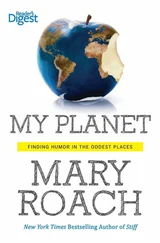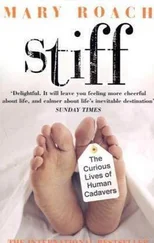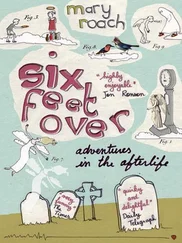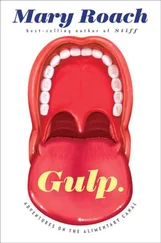This is the same man who, upon being shown a panoramic photograph of a hauntingly beautiful Martian landscape, remarked, “It looks like the outskirts of Las Vegas.” Funny he should say that. As I write this, funding efforts are underway for a $1.6 billion Mars World resort in the desert outside Las Vegas.
Hopefully not based on his earthbound business model. Here are excerpts of TripAdvisor reviews of the Budget Suites America down the road from Bigelow’s firm in Las Vegas. “…An awful musty odor. The bed didn’t have a frame just some box springs setting on the outdated carpet”; “…the pool area smelled of urine…the water murky”; “…air conditioning don’t work…tv don’t work… security acts like Gestapo agents.”
At the time she retired, Saint had been in more than two hundred pornographic movies. Though one or two have a hint of class (e.g., the Kubrickian-sounding Mouth Wide Open ), the bulk of the filmography (e.g., Hot Bods and Tail Pipe #14 , The Adventures of Pee Man ) suggests that Silvia Saint, at age thirty-three, had earned a rest.
Ronca and her colleagues designed an investigator flight patch that featured a pregnant space shuttle surrounded by baby space shuttles. (Like the astronauts, the scientists involved in a mission traditionally commemorate their projects with sew-on patches.) NASA nixed the patch, even though it allowed a Homer Simpson “Sperm in Space” patch to fly. (The patch shows Homer’s head on a sperm tail. The wife of the sperm investigator has a family connection to Simpsons creator Matt Groening.) There may be no sex in space, but there is sexism.
BASE stands for Building Antenna (radio tower) Span (bridge) Earth (cliff)—the four dangerously low things they parachute from. According to a 2007 Journal of Trauma study, the death and injury rate for BASE jumping is five to eight times that of skydiving. Though it’s lower than you’d think: 9 out of 20,850 jumps off Norway’s Kjerag Massif over a ten-year span (run of years) have ended in death.
NASA turned to David Clark because of the company’s experience with rubberized fabric. “A spacesuit is a rubberized anthropomorphic bag,” says retired Air Force master parachutist and escape-system tester Dan Fulgham. “Well, we didn’t have any experience working with rubber bags. We came across the David Clark Company in Worcester, Massachusetts. They were producing twenty gross per month of bras and girdles for Sears, Roebuck.” Fulgham has fond memories of driving up to Worcester for meetings and catching glimpses of fit models wandering around in the back. The contract for the Apollo lunar landing suits went to International Latex, which later became Playtex. This didn’t get a lot of airplay at the time.
The dummies were realistic enough to fool a group of officers’ wives who had gathered for tea at the home of Air Force General Edwin Rawlings. Without warning, a human form thudded to the ground a few hundred feet from the Rawlings’ yard. This was followed by Joe Kittinger driving up in a pickup truck and tossing it in the back and speeding away. The women didn’t think it was an alien; they thought it was an airman. Later that day Kittinger received a call informing him that Mrs. Rawlings’s guests had complained about the careless nature in which the dead “parachutist” was handled.
A proven fact. In 1941, scientists at the Mayo Foundation’s Laboratory for Research in Aviation Medicine convinced a woman with a postsurgical hole in her cranium to sit inside their altitude chamber while they took her up to 28,000 feet. The patient (and never was the term patient more apt) was positioned in front of a centimeter scale while the researchers, like golf caddies, planted a small triangular flag in the hole to mark the spot. At 28,000 feet, the little flag on her brain had risen a full centimeter.
Still, it could have been worse. Also under consideration for the Apollo crews: the “defecation glove.” Here the astronaut would reach around and crap in his own palm, then peel back the glove, much as dog owners use a plastic newspaper sleeve to pick up and dispose of dog feces. Then there was the Chinese Finger, a bag that would clamp onto a bolus as you pulled on the end. The name Chinese Finger refers to the cheap party toy of the same name—and possibly to the astronaut’s response to the device.
Because the astronauts’ time was rigidly scheduled and because bowel movements generally can’t be, crew members were forced into conversations like this one, in the Apollo 15 mission transcript, between Commander Dave Scott and Lunar Module Pilot James Irwin.
SCOTT: Al, why don’t you and I switch off here when…
IRWIN: I’d like to take a crap if I can work it in, Dave.
SCOTT: Okay.
IRWIN: Tell me when.
Astronaut specimens from the Skylab and Apollo eras are still around, in freezers on the top floor of a windowless high-security building at Houston’s Johnson Space Center—the one that houses NASA’s collection of (non-biological) moon rocks. “I am not sure what our inventory of excreta from Apollo is right now,” John Charles told me. “Forty years of freezing, with occasional thaws due to power outages during hurricanes, may have reduced them to mere vestiges of their former glory.” They were there as of 1996, because planetary geologist Ralph Harvey stumbled onto them when he got lost taking a group of VIPs on a tour. “Back then all the doors opened to the same code,” he recalls. “I opened this one door and it was almost like the scene from Raiders of the Lost Ark . There were these rows of long, low freezers. They all had a little light on them that’s blinking, and a temperature readout, and a piece of tape with the astronaut’s name. I’m like, Shit, they stored the astronauts in here! and I quickly got the people out. I found out later that was where they stored the astronaut feces and urine.” Harvey can’t recall the room number. “You have to stumble onto it, that’s the only way you can find it. It’s like Narnia.”
Rethke called this the “orange peel effect.” The term also refers to a defect in a spray-painted surface, most typically the finish on a car. Either way, the auto body guy owes you an apology.
It’s also the main reason the Russians did select females—for animal flights anyway. Training male dogs to urinate into a collection device proved extremely difficult, because cramped conditions in the capsule kept them from assuming their natural posture—lifting a leg.
According to the Diaper Evolution Time Line on disposablediaper.net, the adult diaper debuted in 1987 (in Japan). Though the general disposable diaper concept dates back to 1942. The inventor was a Swedish company—not, as you sometimes hear, NASA. Skimming the time line, it does sometimes sound as though NASA were involved. There are vacuum-dry diapers, pulpless diapers, diapers with flexible closing systems and “reduced chassis and elastic ears.” NASA’s adult diapers are COTS—a “commercial off the shelf” product. The current one is a product called Absorbencies. It is hard to imagine a worse name for a diaper, except possibly NASA’s previous commercial off-the-shelf adult diaper, Rejoice.
Religious observations are even tougher in a real spacecraft. Launch weight limitations forced Buzz Aldrin to pack a “tiny Host” and thimble-sized wine chalice for his DIY Communion on the moon. Zero gravity and a ninety-minute orbital day created so many questions for Muslim astronauts that a “Guideline of Performing Ibadah at the International Space Station” was drafted. Rather than require Muslim astronauts to pray five times during each ninety-minute orbit of Earth, the guidelines allowed them to go by the twenty-four-hour cycle of the launch location. Wipes (“not less than 3 pieces”) could be used for preprayer cleansing. And since the orbiting Muslim who began his prayer while facing Mecca was likely, by prayer’s end, to be mooning Mecca, provisions were made allowing him to simply face the Earth or “wherever.” Lastly, instead of lowering the face to the ground, a trying maneuver in zero gravity, prostrating oneself could be approximated by “bringing down the chin closer to the knee,” “using the eye lid as an indicator of the changing of posture” or—in the vein of “wherever”—simply “imagining” the sequence of movements.
Читать дальше












